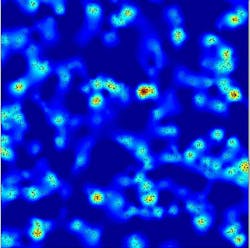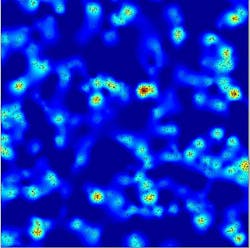Super-res microscopy yields clearest images of immune cells
Scientists from the University of Manchester in England used super-resolution microscopy to reveal new images that provide the clearest picture to date of how white blood immune cells attack viral infections and tumors. The images show how the cells, which are responsible for fighting infections and cancer in the human body, change the organization of their surface molecules when activated by a type of protein found on viral-infected or tumor cells.
Related: Extreme precision in 3D: Adaptive optics boosts super-resolution microscopy
Professor Daniel Davis, who has been leading the investigation into the immune cells, known as natural killers, said the work could provide important clues for tackling disease. The research, funded by the Medical Research Council (MRC) and Biotechnology and Biological Sciences Research Council (BBSRC), reveals that the proteins at the surface of immune cells are not evenly spaced, but grouped in clusters.
Davis, the director of research at the Manchester Collaborative Centre for Inflammation Research (MCCIR), which is a partnership between the University and pharmaceutical companies GlaxoSmithKline and Astra Zeneca, says that this is the first time scientists have looked at how these immune cells work at such a high resolution. The surprising thing was that these new pictures revealed that immune cell surfaces alter at the nanoscale, which could perhaps change their ability to be activated in a subsequent encounter with a diseased cell.
"We have shown that immune cell proteins are not evenly distributed as once thought, but instead they are grouped in very small clumpsâa bit like if you were an astronomer looking at clusters of stars in the universe and you would notice that they were grouped in clusters," Davis explains. "We studied how these clusters or proteins change when the immune cells are switched onâto kill diseased cells. Looking at our cells in this much detail gives us a greater understanding about how the immune system works and could provide useful clues for developing drugs to target disease in the future."
Until now, the limitations of light microscopy have prevented a clear understanding of how immune cells detect other cells as being diseased or healthy.
Full details of their work appear in the journal Science Signalling; for more information, please visit http://bit.ly/18ILXTh.
-----
Follow us on Twitter, 'like' us on Facebook, and join our group on LinkedIn
Subscribe now to BioOptics World magazine; it's free!

